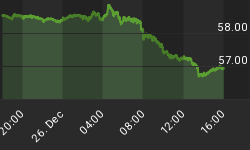Rapidly rising prices of consumer goods in the United States has lately become a focal point of the U.S. economy . According to the Labor Department, the consumer-price index (CPI) hit a 13-year high of 5.4% in the months of June and July, about twice the 10-year average. Rising inflation is being driven by demand for goods and services outpacing the ability of companies to keep up with supply-side bottlenecks hampering diverse industries including semiconductors and the solar sectors; a big spike in the price of used cars, significant stimulus funding as well as a surge in the U.S. personal savings rate.
In fact, U.S. inflation has reached such alarming levels that President Joe Biden recently reached out to OPEC to increase oil production in a bid to tame rising gasoline levels for the U.S. consumer. Gas prices tend to have a huge impact on the American psyche.
But it’s not all gloom and gloom: Wages in the country have been rising at a pretty impressive clip.
Unfortunately, real wages have actually been falling, meaning life could be getting harder for the average U.S. worker despite better pay.
Falling Real Wages
Average hourly wages grew 3.6% Y/Y in June, the most in more than a decade.
However, a much higher inflation rate means that the average worker is essentially getting a 2% pay cut, according to the Bureau of Labor Statistics. According to Sen. Tim Scott, R-S.C, “The staples of American life are increasing exponentially,” citing examples like higher prices for gas, laundry, airfare, moving costs, hotels, bacon and TVs.
“Real wages” is defined as a measure of income after accounting for the cost of goods and services people buy.
To be fair, the argument that inflation has been eating into rising wages is a little bit more nuanced.
For one, whether the current scenario benefits a consumer or not largely depends on their individual earnings and the things they buy. Second, wage increases have historically been heavily skewed in favor of high-earners: A study by the Brookings Institution found that the lowest earners saw a mere 4% increase in wages since 1979 compared to a 34% increase for workers at the top.
Still, rising inflation is a real problem that’s being exacerbated by businesses passing their rising costs to consumers.
For Instance, Chipotle Mexican Grill (NYSE:CMG) boosted its average pay to $15 an hour this summer but also raised food prices up to 4% to cover the extra costs.
CMG is not alone. Restaurants have been readily passing on higher costs to customers without a hit to their bottom lines thanks to demand for eating out remaining sky-high. Tyson Foods (NYSE:TSN) says it intends to raise chicken and pork prices, in part to offset higher wages in its meat processing plants.
Overall, prices for restaurant meals jumped 0.8% between June and July, marking the biggest month-over-month increase in more than four decades. And you can expect this trend to continue: According to Chipotle CEO Brian Niccol, there’s been ‘‘very little resistance to the price increase."
There’s a method to the madness though.
"People are tired of cooking their own meals," says Lyle Margolis, a senior director at Fitch Ratings. "They're tired of cleaning up after themselves. They want to be waited on and they want to be social. And restaurants are a great place to do that."
Goldman Sachs shares the Fed’s view that inflation and price pressures are largely transitory and should subside in the coming months. However, should high inflation persist beyond six months, Goldman says companies with pricing power are likely to do well. Sectors that have historically done well in high-inflation environments are Energy (NYSEARCA:XLE), Real Estate (NYSEARCA:XLRE), Health Care (NYSEARCA:XLV) and Consumer Staples (NYSEARCA:XLP).

















